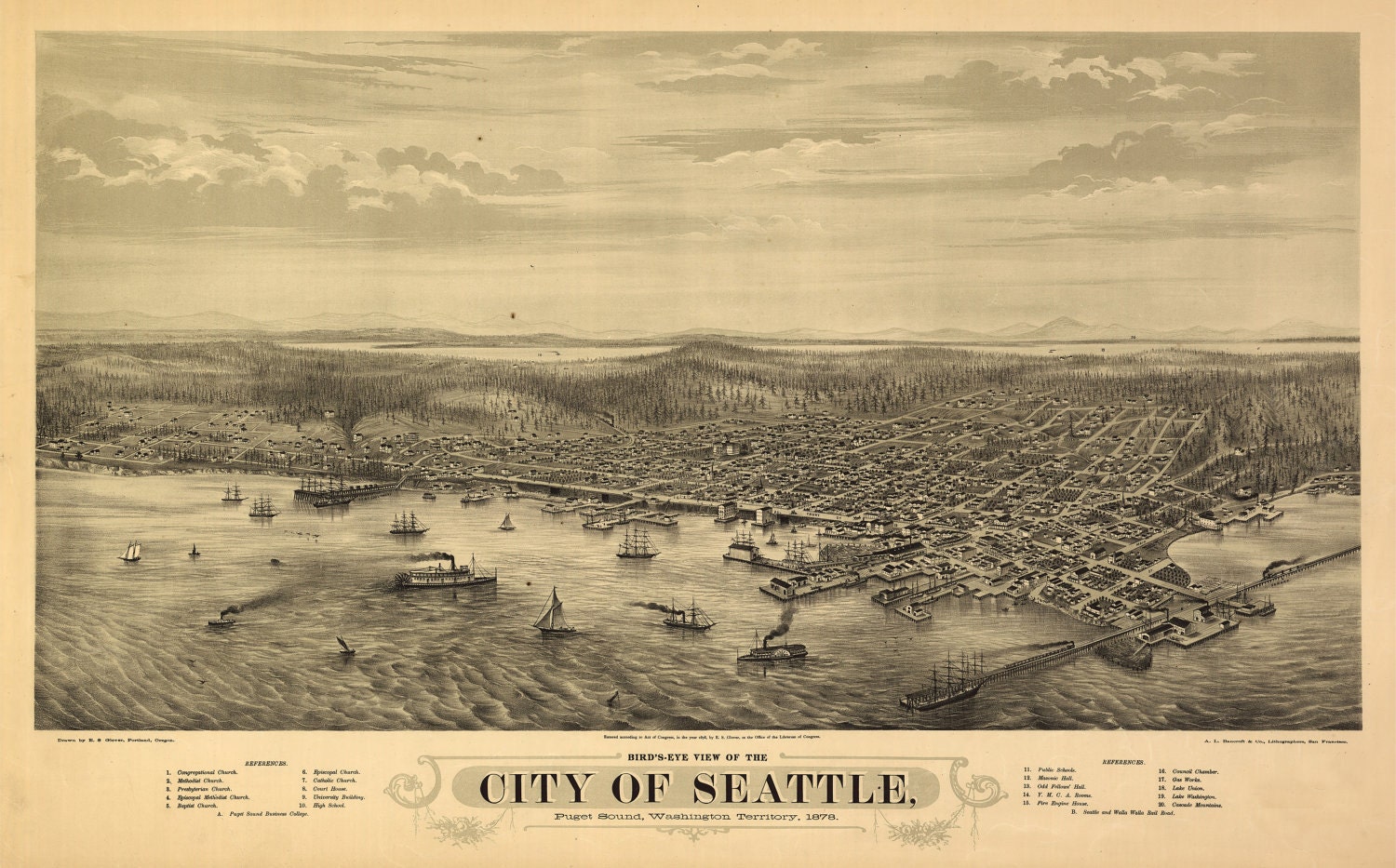

These days, you can still navigate a lot of neighborhoods via walking, and Seattle is pursuing a revitalization of the street car in the South Lake Union, Capitol Hill and North Seattle neighborhoods.

However, most people drive their cars to work and those who cannot tend to ride the bus. As a result, you have a lot of congestion on a few main arteries: Interstate 5, Interstate 90 and WA-99 (Aurora).
Aurora might be one the ugliest stretches of road in the entire city. You can almost feel the automobile's growing pains since its very invention along this stretch of tarmac.


For those of us without daily access to a car, we usually take the bus to get to work. I ride 20 minutes north and south each day to reach the community college where I teach. Most of the time, it's not so bad. I swipe my ORCA Card, a prepaid plastic card with advanced electronics embedded, to pay my fair. For those without one (a minority for locals) they can purchase them online or at transit centers where they can put funds on the card or purchase a monthly pass. This monthly pass proves a better option for heavy users.


I find this daily habit fairly painless. But recently I have made the trip to work in my girlfriend's car, when she dropped me off. I will certainly and readily admit that a car ride is a more pleasant and comfortable experience. Sometimes on the bus you'll hear crying children, loud teenagers and weird conversations. The waft of weed might even drift your way. Also, I am prone to motion sensitivity. For many the opportunity to work on the bus would be welcomed, but if I read while moving I get nauseous.
I don't really want to ride a car every day to work, and, quite frankly, I would like to see most people either live near enough to their work to walk or use public transit. However, please, OH PLEASE, let's get away from the bus mentality and return to streetcars. The modern models are incredibly smooth. I believe I could actually work on them. We could even make them more comfortable if there were the political will and public financing available. I'm ready to spend my life advocating for such a transition, and I'm glad Mayor McGinn has made streetcars and rail transit a main priority.
I have thought about biking, and I may still purchase a bike one day and give it a go. My main contention, Seattle has hills galore. BUT, they have many bike trails for commuting throughout the city.

Maybe I'll get myself motivated to make the leap towards bikes. They say you never forget how to ride one...
Be on the lookout for a post from Kirsten about how she sometimes gets around Seattle, in a car. But... it's not what you think!
-Jimmy












